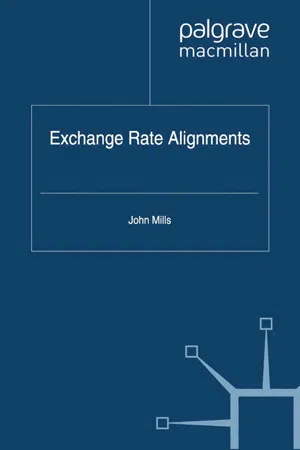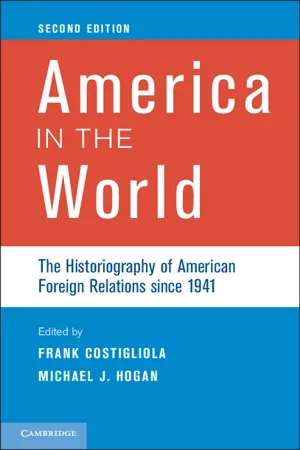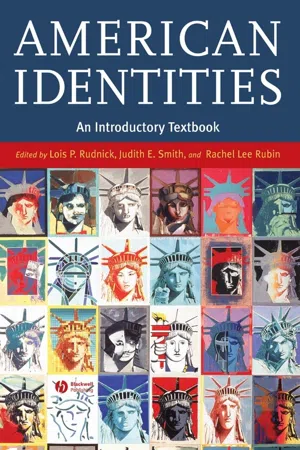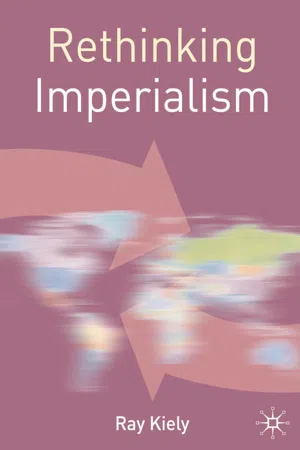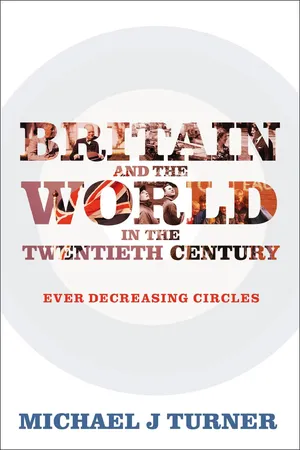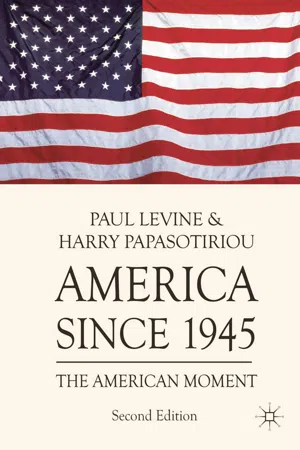History
US Post World War 2
The US post-World War 2 period was characterized by significant economic growth, technological advancements, and the emergence of the United States as a global superpower. This era also saw the implementation of major social and political changes, including the civil rights movement and the establishment of the United Nations. The US played a central role in shaping the post-war world order through initiatives such as the Marshall Plan.
Written by Perlego with AI-assistance
Related key terms
1 of 5
8 Key excerpts on "US Post World War 2"
- eBook - PDF
- J. Mills(Author)
- 2012(Publication Date)
- Palgrave Macmillan(Publisher)
At the same time, generous welfare systems had been established, progress had been made towards making post-tax income distribution more equal, vast improvements had been made in housing and education, and political stability seemed assured. Few people, therefore, foresaw the nature or scale of the prob- lems which were about to unfold. US experience post-World War II The years immediately after World War II saw a substantial slackening of demand on the US economy as war effort–based government procure- ment fell away. US GDP fell over 17 per cent between 1944 and 1947. Unemployment rose from 1.2 to 3.9 per cent. The peak wartime output level achieved by the US economy in 1944 was not regained until 1951. 13 Still, the US economy was in an extremely strong position after 1945. Partly because of the dominant position in which the USA found itself post-war, however, it faced a number of problems which tended to sap rather than reinforce growth performance in the decades to follow. First, its victorious position left it with heavy international commit- ments, which greatly increased US unilateral transfers abroad. The most substantial was expenditure on major military presences in Europe, the Far East and elsewhere. This cost increased sharply with the advent of the Cold War. The Korean War, which broke out in June 1950, generated an additional peak. Significant sums were also paid out to various inter- national programmes, not least the Marshall Plan. Aid programmes also went some way towards helping to deal with the second problem with which the USA had to contend, which was trade imbalances. Although there was a large potential demand for US exports, which would have helped boost the US economy, the rest of Post-World War II 149 the world was extremely short of dollars with which to pay for them. - eBook - PDF
America in the World
The Historiography of American Foreign Relations since 1941
- Frank Costigliola, Michael J. Hogan(Authors)
- 2013(Publication Date)
- Cambridge University Press(Publisher)
57 Although World War II ended more than sixty-five years ago, it continues to exercise an enormous influence over contemporary thought and his- torical scholarship. This is true not only in the obvious field of military history, but in diplomatic history as well. In previous essays I noted that the historiography of U.S. foreign rela- tions during World War II possessed characteristics both similar to and different from other areas of intense historical dispute. 1 Major similar- ities included the large volume of writings, the impact of contemporary concerns on evolving interpretations, and the effect of new schools of thought regarding U.S. foreign relations in general. World War II diplo- macy was a unique field, however, in at least two important respects. First, the combination of massive documentary evidence and continued popu- lar interest in the war had resulted in a volume of literature so enormous and so rapidly growing as to merit special mention. Second, although the resulting schools of interpretation reflected to an extent those of U.S. foreign relations in general, they possessed a distinctive quality because of the enormous influence of the Cold War on the interpreters. That influ- ence had led most historians for many years to analyze World War II diplomacy primarily in terms of its role in the post-war Soviet-American conflict. Both characteristics continued throughout the post–Cold War years. Volumes on U.S. World War II foreign relations as well as on other aspects of the war still poured out of both commercial and university presses. Indeed, by 2001 there were already more than 165,000 World War II titles in the subject index of the Online Computer Library Center’s First Search, over half of them in English; two volumes comprising fifty-eight 4 Still Contested and Colonized Ground: Post–Cold War Interpretations of U.S. Foreign Relations during World War II Mark A. Stoler - eBook - PDF
American Identities
An Introductory Textbook
- Lois P. Rudnick, Judith E. Smith, Rachel Lee Rubin, Lois P. Rudnick, Judith E. Smith, Rachel Lee Rubin(Authors)
- 2009(Publication Date)
- Wiley-Blackwell(Publisher)
PART II World War II and the Postwar Era, 1940–1960 W orld War II brought an end to the Great Depression (1929–40), the worst economic crisis in US history, during which a substantial number of Americans were unemployed. In 1940, the US population was approxi-mately 131,000,000. According to historian Richard Polenberg, the majority of Americans, 60 to 70 percent, were working class or lower middle class, with incomes of $1,200 to $1,600 a year; 15 to 25 percent were poor, earning less than $1,000 a year ; and 15 percent belonged to the upper middle classes, with incomes of $2,500 to $5,000 a year. About 25 percent of Americans had graduated from high school, and 5 percent from college. The US was not yet a ‘‘middle-class’’ nation. World War II was a major turning point in the lives of the majority of Americans of every class, race, and region: 16 million men and women served in the armed forces; 15 million more migrated to take war-related jobs, including 4.5 million women who became 36 percent of the labor force. After Japan attacked Pearl Harbor, there was an enormous effort on the part of the government and mass media to ‘‘sell’’ the war as a people’s war for freedom. Wartime mobility disrupted ethnic neighborhoods, and people mixed, met, and worked together from many different backgrounds. This led to the strong sense of national solidarity that united most Americans in support of the war. But it also led to violent conflict and the suppression of civil rights, particularly in the case of Japanese and Japanese Americans whom the government forcibly moved into internment camps. African-American leaders called for a ‘‘double ‘V’ victory,’’ against fascism abroad and racism at home, laying the groundwork for the postwar Civil Rights Movement. - eBook - PDF
- Ray Kiely(Author)
- 2010(Publication Date)
- Red Globe Press(Publisher)
These changes were so great that they call into question Marxist accounts of imperialism which highlight inter-imperialist rivalries, but also, I will argue, undermine some more mainstream, realist accounts of international relations. On the other hand, I will suggest in later chapters that there are also some continu-ities with nineteenth-century British imperialism, but not with the European imperialisms of the late nineteenth century. This section focuses on the nature of the post-war international order, the leading role of the US in this order, and how this differed from the pre-1945 period. Crucially, the post-war (capitalist) order was in many respects a liberal order. There was a strong commitment to international cooper-ation between advanced capitalist states, the promotion of interna-tional organizations and multilateral agreements, a long-term The Cold War and Post-War Boom 93 commitment to ‘open door’ policies of free trade, and a commitment to the end of colonial empires and their replacement by newly created sovereign states. The British had attempted to implement all of these except anti-colonialism, as we saw in Chapter 3. However, the US transformation was far more effective and successful. US-led liberal internationalism was in practice compromised, but even then, there were significant differences from the pre-war order of intense compe-tition between advanced capitalist powers, the effective breakdown of international cooperation, competitive devaluations and heightened protectionism in the context of the depression of the 1930s 1 as well as the continued existence of empires. It is also clear that US hegemony after 1945 was used to re-fashion the international capitalist order, and to place the emphasis on cooperation and multilateral relations between the developed capitalist powers. - eBook - ePub
Globalization Contained
The Economic and Strategic Consequences of the Container
- L. Hoovestal(Author)
- 2013(Publication Date)
- Palgrave Macmillan(Publisher)
Chapter 1 The Postwar WorldT he Cold War dominated international relations for more than 45 years (1945–91). It radically altered the global map and illustrated the robust nature of the relationship between the strategic and economic dimensions of world affairs. In strategic terms, these changes became apparent with the crumbling of some states and the formation of others. In economic terms, the increasing integration of the global economy signified the victory of economic liberalism over contending economic systems.Fundamentally, the Cold War was a battle between two hegemons, each of whom sought to achieve world order in terms of opposing strategic and economic blueprints. The realist security paradigm that informed much of the Cold War—particularly in its early years—began to give way to the interconnectedness of the liberalist global economy.The desire for national security was preeminent for both the United States and the Soviet Union following World War II (WWII). Each nation tended to view the world primarily from a realist perspective, where conflicts of national interest were inevitable and war was always imminent.These two global superpowers sought to construct international economic systems that suited their particular ideologies. The Allied postwar planners, for example, believed that realist strategic policies could not be separated from liberalist economic policies. In order to achieve security, Allied planners sought to implement a global economic liberalist framework.At Bretton Woods in July 1944, for example, it was argued that in a more economically open and interconnected world, nations would seek cooperation and avoid conflict. This economic liberalist framework excluded the Soviet Union and its ever expanding group of communist allies.Despite the liberalist framework, the ensuing Cold War was largely characterized by realist strategics. It was also characterized by the polarization of domestic and international politics; the division of the world into economic spheres; competition and conflict in the third world; a costly and dangerous arms race; and most significantly a liberalist challenge to realist notions of security. - eBook - ePub
- John F. Walker, Harold G. Vatter(Authors)
- 2015(Publication Date)
- Routledge(Publisher)
CHAPTER II Highlights of Change in the Postwar Era 3. Some Deeper Currents in the Recent Past Stuart BrucheyExcerpted and reprinted with permission from The Wealth of the Nation by Stuart Bruchey (New York: Harper & Row, 1988), pp. 198–232. Stuart Bruchey is Allan Nevins professor emeritus of American economic history at Columbia University.As the American people entered upon the closing years of the twentieth century, the vistas that opened before them were being shaped silently by two fundamental forces. One was demography, the other technology. As always, the two were closely connected. Technology in the form of medical research and improvements in health care was reducing mortality, lengthening the span of life, and increasing the proportion of the elderly in the population. Technology, especially in the form of lightning-quick flows of computerized information, was enriching the data bases on which investment and other strategic business decisions were being made. It was these private decisions, the many-tongued voice of the market, which were determining the pace at which the economy was growing. And the latter was deeply influencing family formation, birth rates, and immigration.Between 1950 and the end of 1986 the population rose by nearly 77 million people. More than half the increase, some 42 million, came between 1950 and 1965. This “baby boom” caught demographers by surprise. They had confidently predicted a postwar continuation of the declining trends of the 1930s. Although a steep decline in births set in after the crest of the boom was reached in the late 1960s, it was clear to demographers that the baby boomers of the postwar years would confront American society with grave problems in the early decades of the twenty-first century.The percentage of the population older than sixty-five was expected to climb moderately from 11.3 percent to 13.1 percent between 1980 and 2000, but by 2030 it would exceed 21 percent. In consequence there would be heavy pressures to spend more money on both hospital and long-term care for generations caught in the coils of degenerative illness. Chronic illness was one thing, acute illness another. Society was organized and financed to treat the latter—medical emergencies—but the sad truth was that chronic illnesses accounted for 80 percent of all deaths and 90 percent of all disabilities. A person suffering a heart attack might be sped to the nearest hospital. One with Alzheimer’s disease was more likely to go broke gradually. - eBook - PDF
Britain and the World in the Twentieth Century
Ever Decreasing Circles
- Michael J Turner(Author)
- 2010(Publication Date)
- Continuum(Publisher)
2 Post-war Adjustments On 19 February 1947, British foreign secretary Ernest Bevin instructed Lord Inverchapel, Britain’s ambassador in Washington DC, to inform the US state department that, owing to financial constraints, Britain could no longer sup-port Greece and Turkey against communist insurgency and external pressure. The Americans would have to step in and take over. This was a turning point in post-war history. Bevin’s success in persuading the United States to commit itself to security arrangements in Europe was regarded at the time and afterwards as a notable accomplishment, but was it a sign of British influence and ingenuity, or of failure and weakness? The desire to obtain American support did not mean that Britain was no longer a great power. London was able to provide for the security of Britain, the empire and a range of global interests, and to promote a European settlement after the Second World War, pursuing these ends both independently and in league with others. In Europe and beyond Britain played a leading role in post-war international relations, but economic problems imposed limitations, as did the need to work with allies. The British had to reassess aims and methods because they could not afford not to, but in the circumstances they did well. Prestige and influence were sustained. This was a period in which the international order was rapidly changing. The disruption wrought by the Second World War necessitated adjustments on the part of all the great powers. The desire for peace and co-operation had led to the establishment of the United Nations on 24 October 1945, but the existence of the UN did not mean that the post-war years were free of tension. In the historiography of the Cold War, most attention is paid to the United States and the USSR, though the focus is often on Europe, where the distinc-tion between rival political and economic systems became most pronounced. - eBook - PDF
America since 1945
The American Moment
- Paul Levine, Harry Papasotiriou(Authors)
- 2010(Publication Date)
- Red Globe Press(Publisher)
He, by reason of his choice, partially decided the outcome. But whether, after life, he went to hell or to heaven, his place among other men was given. It could not be contested. But, since, the stage has been reset and human beings only walk on it, and under this revision, we have, instead, history to answer to. We were important enough then for our souls to be fought over. Now, each of us is responsible for his own salvation, which is his greatness. And that, that greatness, is the rock our hearts are abraded on. Bellow’s anxiety was in part a response to the global destruction during World War II. Its most terrible manifestation was the Holocaust in which six million European Jews were systematically murdered. Only months after the revelations of the death camps, when the Japanese authorities refused to surrender uncon-ditionally, American planes dropped the first atom bombs on Hiroshima and Nagasaki, causing mass destruction and creating a second wave of public shock. Some historians have argued that this was the first act of the Cold War. ‘The war was over,’ wrote the literary critic Alfred Kazin. ‘The war would never end.’ A double-edged sense of relief and anxiety permeated postwar society. Morris Dickstein notes, ‘Even more than World War I, in which American participation had been brief and casualties relatively light, the Second World War was a water-shed, a turning point, in the social history of the nation.’ Not only did five times as many Americans die in the second conflict as in the first, but the nation expe-rienced a total mobilization for the war effort. Thus by 1945, American society had been radically transformed. Millions of returning soldiers as well as civilians on the home front were adjusting to a new reality. Movie critics have pointed to the postwar popularity of film noir, the dark melodramas and mysteries like Mildred Pierce (1945), The Big Sleep (1946) and Out of the Past (1947).
Index pages curate the most relevant extracts from our library of academic textbooks. They’ve been created using an in-house natural language model (NLM), each adding context and meaning to key research topics.
